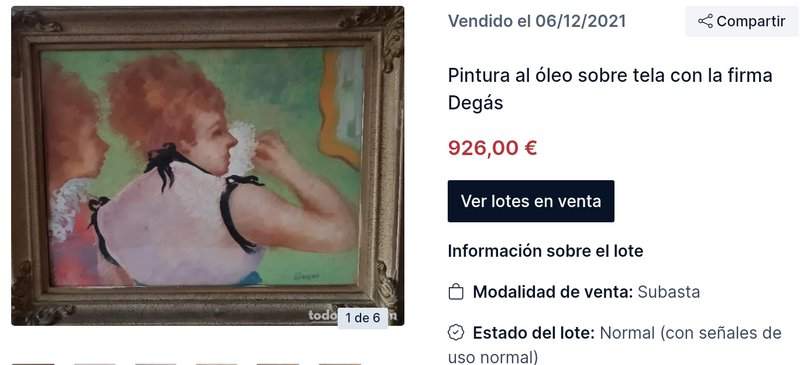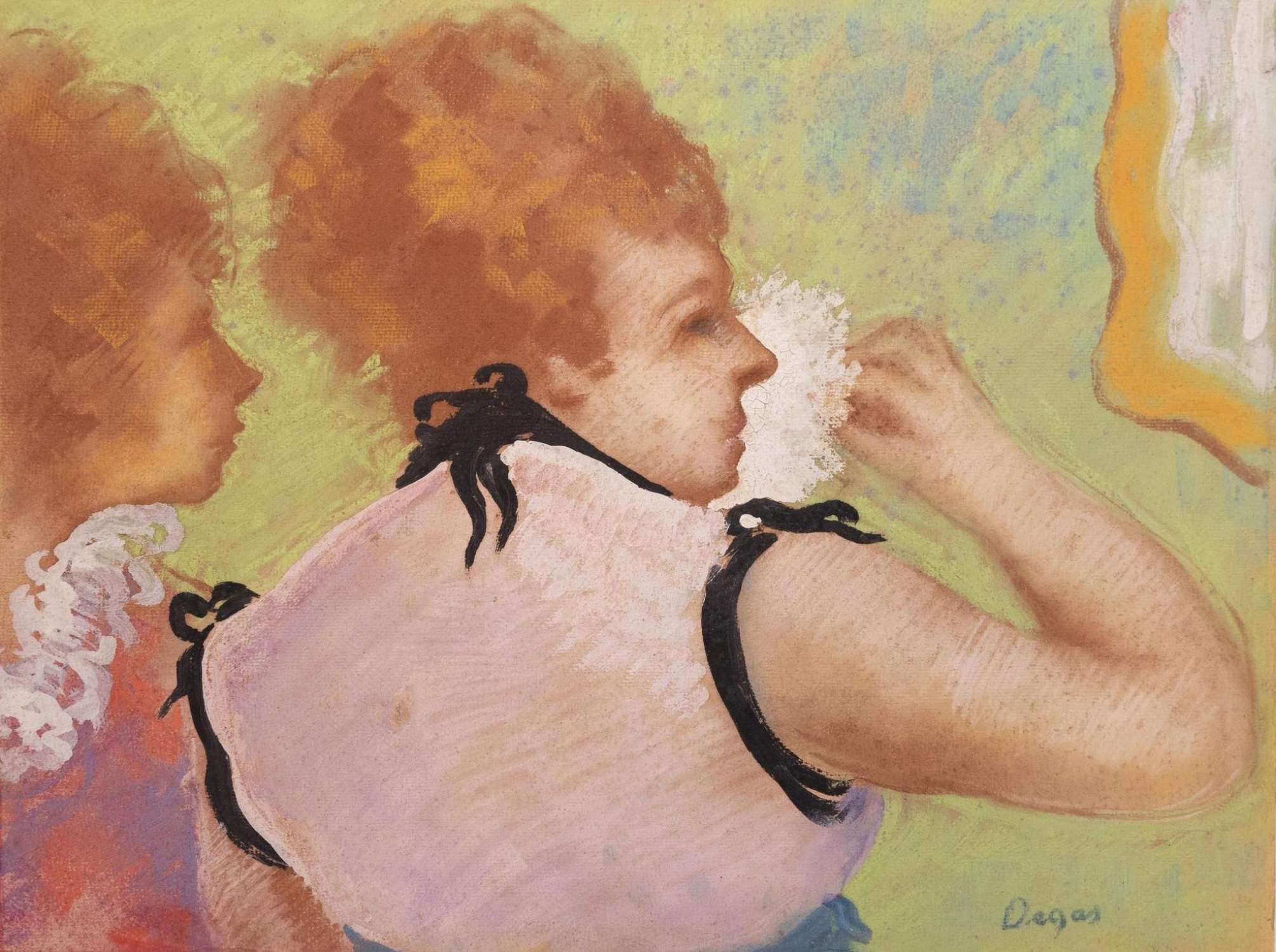Catalonia's Mossos police often warn of the dangers of social media scams in which, taking advantage of ignorance, cybercriminals are sometimes able to empty an unsuspecting person's bank account. But the public must also be careful of tripping up on their own innocence, which can cost millions. That is exactly what happened in a case reported by El Punt Avui, that a resident of Sabadell, in Catalonia, sold a work by the French impressionist Edgar Degas for 926 euros thinking it just had to be a fake. The painting, Éloge du maquillage, "In praise of cosmetics", is valued at around 12 million.
The owner put the work on sale through the internet auction portal Todocolección, with an initial price of 1 euro, and even noting that it "bears the signature Degàs". In the end, the vendor was paid over 900 times the asking price - a total of 926 euros - which might have felt like win-win for both parties, but the real valuation for the late 19th century work is around 12 million euros. The seller uploaded images of the painting and documents about its purchase in 1940 by one of his ancestors, Catalan businessman Joan Llonch, a former president of Banco Sabadell.
The buyer authenticated it
The on-line buyer of the painting took advantage of the documents accompanying the painting to commission expert Michel Schulman to audit the authenticity of the claimed (and disclaimed) Edgar Degas work. The work, a scene in a brothel painted around 1876, had been missing for years, and the expert determined that it was indeed an original by the French painter who died in 1917. Recent prices for Degas works have ranged from seven to twelve million euros.

The work by the celebrated French impressionist, full name Hilaire-Germain-Edgar de Gas, was exhibited this Tuesday for a few hours at the Institut Français in Madrid and that's when the story came to llight. The identity of the person who obtained the work for a bargain price is however, unknown. Nor do we know the reaction of the Catalan who sold the painting, so absolutely convinced that it was fake that he sold himself very, very short. Since 1940 the work had belonged to Joan Llonch, but before that it had already changed hands. In 1887, Degas himself sold the painting to Julián Bastinos for 3,000 francs. It then entered Spain, but at the end of the Civil War it was confiscated and bought, in 1940, by the banker Joan Llonch. Now the history of the impressionist work has a new layer.

